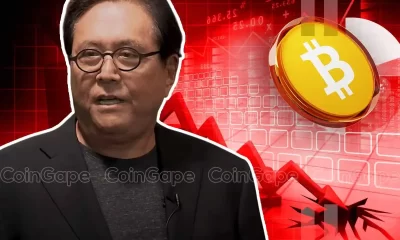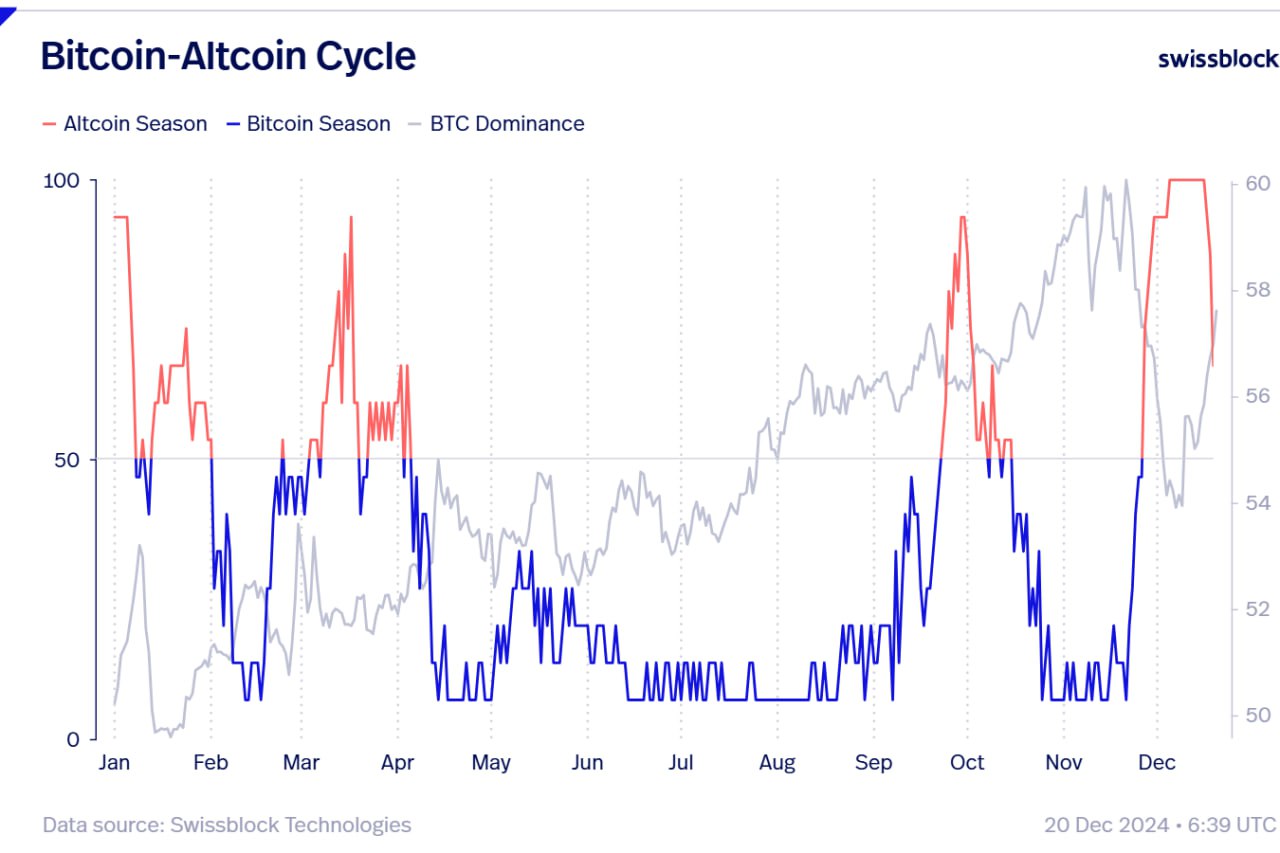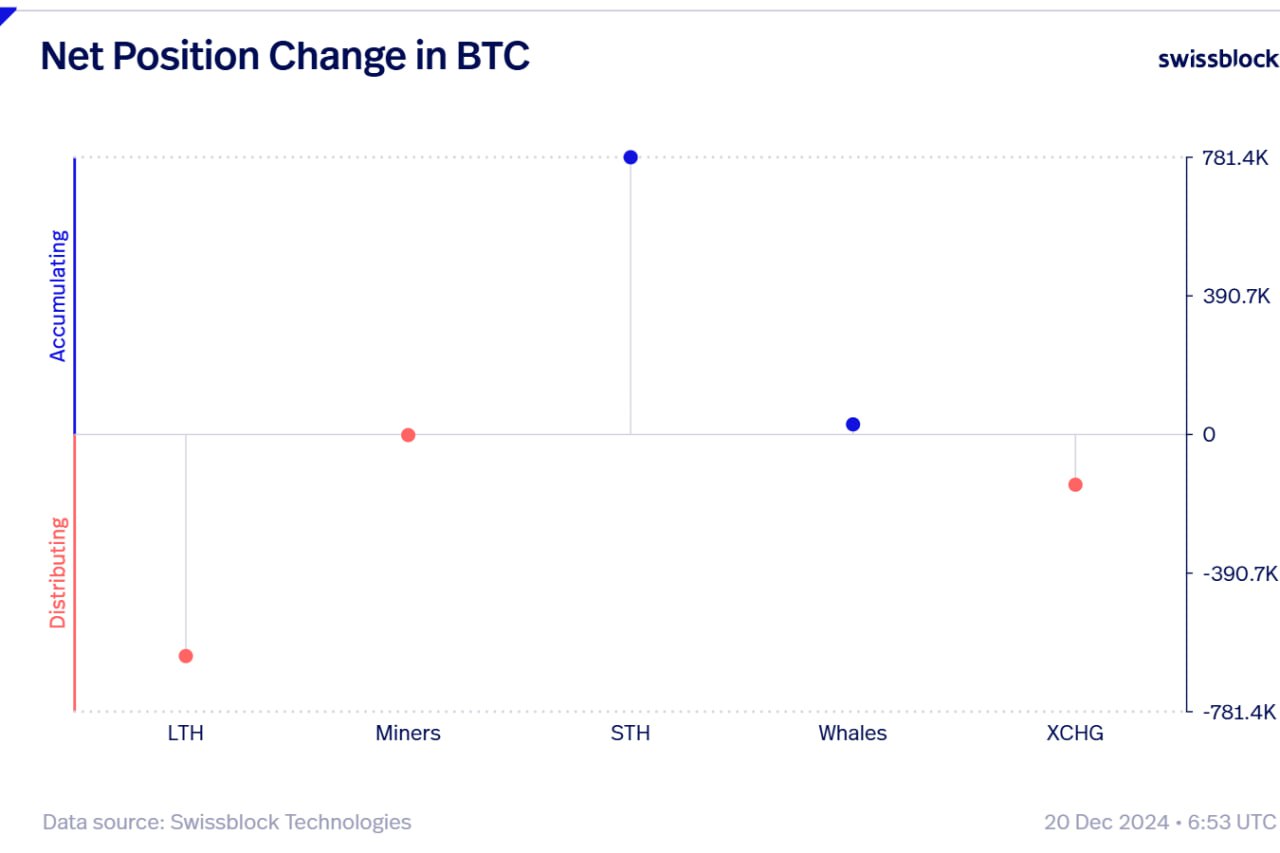Bitcoin
The Other Satoshis: Bitcoin's Most Important Early Contributors
Published
4 months agoon
By
admin
This article is featured in Bitcoin Magazine’s “The Halving Issue”. Click here to get your copy.
If, in 2021, the identity of Satoshi Nakamoto remains a mystery, so too does the two-year period from 2008 to 2010 when Bitcoin’s creator served as the project’s principal developer and leader.
Yet, far from a lifeless period of project development, during those years Nakamoto worked with dozens if not hundreds of Bitcoin users, all of whom contributed to the effort in different ways, establishing websites, engaging in commerce and evangelizing for his invention.
Still, some users naturally emerged as more distinguished contributors.
Whether it was by helping establish core elements of the Bitcoin philosophy or articulating its value propositions in new and novel ways, a meritocracy developed as quickly as the market, with some contributors earning outsized accolades from their peers.
With that in mind, this list aims to identify the contributors who most helped to define and shape Bitcoin and its early years, identifying their specific efforts and spotlighting their relevant work.
Martti Malmi (@Sirius)

Satoshi’s initial assistant, Martti Malmi, demonstrated a commitment to Bitcoin at a time when few were willing to see value in an internet currency that lacked even an exchange rate.
A university student in May 2009, Malmi contributed most directly to Bitcoin.org and the Bitcoin Wiki, where he helped make the websites look more comprehensive and professional. (He was less kind to euros he used at the time, writing “Bitcoin.org” on any bills he encountered.)
Malmi also added an early Austrian perspective to conversations around Bitcoin, dismissing complaints about gold as “old Keynesian arguments” and noting that the precious metal was “unmatched” by any paper money in the stability it offered over time.
In his entrepreneurial efforts, Malmi was less successful, his early bitcoin exchange service, BitcoinExchange.com, struggling to get off the ground in 2010.
Yet, he’d arguably make his biggest mark evangelizing for Bitcoin, creating a Facebook page (“Say no to central banking — use Bitcoin, the revolutionary P2P currency!” it read) and leading the first major effort to get Bitcoin publicity.
Theymos

One of Bitcoin’s most influential thinkers, Theymos never contributed code to the Bitcoin project directly but worked for years as a central moderator for its major forums.
A keen student of the codebase, his influence was apparent from the project’s earliest days when on the Bitcoin.org forums or IRC Theymos could be counted on to define how the protocol worked, his understanding sometimes even surpassing that of other avid coders.
What’s clear is that, after discovering Bitcoin in February 2010, Theymos went to work auditing the code, as his posts show an intricate understanding of not just the basic concepts, but even the more obscure commands Satoshi added to the codebase at launch.
However, it’s Theymos’ contributions to project philosophy that perhaps stand out the most. The first to point out directly that changes to the code could result in issues impacting the rights of users, it’s clear Theymos thought deeply about the implications of Bitcoin’s design.
For instance, he was at the forefront of arguing users could leverage their ability to fork the code if they ever disagreed with project leadership, an argument he’d push to its limits when he’d attempt to overturn a code change enacted by Satoshi.
The fact that, when looking back at this disagreement, many would side with Theymos’ view on the matter is all the more evidence that his early thinking has endured.
Hal Finney (@Hal)

A storied cypherpunk, Hal Finney tragically only contributed code briefly at the earliest days of Bitcoin and was absent for much of 2009 and 2010 as he struggled to regain his health.
Still, Finney’s influence today rings far and wide, most notably for the enduring optimism with which he approached the project.
Among his sparse blog posts are some of the most widely quoted moments from the project’s history, including his initial calculations on how, if successful, bitcoin could someday be worth millions should it grow to denominate global economic exchange.
Elsewhere, Finney has even been credited with his own branch of philosophy on how Bitcoin might scale, the term “Finnian view” coming to denote his belief that second-layer networks, as well as bitcoin banks, would help solve the technology’s struggles to accommodate demand.
Finney, who passed away in 2014 at 58, was also the recipient of the first-ever bitcoin transaction, and the only person known to have transacted directly with Satoshi Nakamoto.
NewLibertyStandard

What is bitcoin worth? If it’s a question many have asked, NewLibertyStandard was the first to provide a response.
Indeed, the first-ever quoted price for bitcoin was given by NewLibertyStandard on October 5, 2009, when they posted a daily exchange rate of 1,303 BTC per U.S. dollar. The calculation was made by factoring the cost of the electricity used to mine newly minted bitcoin and lauded by Satoshi as a helpful step in pricing the cryptocurrency.
Not just the creator of the earliest bitcoin exchange, NewLibertyStandard proposed using the Thai baht symbol to represent Bitcoin and suggested “BTC” as its three-letter currency code.
Despite his outsized contributions to the bitcoin economy, however, NewLibertyStandard could also wax philosophical. As an example, they were an early advocate for the idea that Bitcoin might enable individuals to peacefully exit their government currencies.
Gavin Andresen

Andresen may not have been the father of Bitcoin, but in many ways, he raised the kid.
An Australian-born Silicon Valley expat best known for creating a standard for 3D graphics in his younger days (VRML), Andresen had an established career in software prior to coding on Bitcoin, which included time spent at computer manufacturer Silicon Graphics.
His rise up the ranks of the Bitcoin meritocracy would be swift. Not only did he give away over 1,000 bitcoin free of charge to new users, but he quickly became Satoshi’s most active contributor, gaining access to update the code directly by late 2010.
Indeed, it would be Andresen who would “step up” in Satoshi’s absence, leading a charge to push new developers to get involved in the project and shouldering the weight of the press and media that descended during Bitcoin’s first rise to the fringes of the tech mainstream in 2011.
Often now critiqued for his role in stoking later frictions in the project, it’s easy to overlook the fact that Andresen was also one of Bitcoin’s most eloquent early spokespeople, his arguments for it as a “just plain better money” finding ears when bitcoin was a “drug currency” to most.
Laszlo Hanyecz (laszlo)

Best known as the man who spent thousands of bitcoin on pizza, Laszlo Hanyecz was a Florida-based coder who first translated Bitcoin (then available only for Windows) into MacOS.
Joining the project in April 2010, Hanyecz quickly announced an interest in running Bitcoin on his iPhone, but it would be his May 2010 decision to pay 10,000 BTC to anyone who would buy him pizza that would mark his most significant contribution.
At the time, Bitcoin had an established price (less than a penny), and bitcoin had been bought and sold, but no real-world product had ever been purchased with the fledgling currency.
Hanyecz’s time with the project would be brief, however. He stopped contributing in August 2010 but has resurfaced from time to time for interviews, most recently in 2009 for the news show “60 Minutes” where he discussed his bitcoin pizza purchase.
Artforz

A largely unknown figure, Artforz is nonetheless credited with notable engineering contributions, as they are thought to be the first Bitcoin user to mine with more powerful GPUs (in the process starting the global mining arms race that continues to this day).
Though Artforz denied making up 25% of the early network’s hash rate as accused, it was a rumor during his day, one they eventually had to address directly on the forums.
Still, if Artforz did mine an outsized number of early blocks, he showed himself to be an altruistic steward of the network, identifying a bug in one case that, if exploited, would have allowed him to spend bitcoin from other wallets he didn’t own, reporting it directly to Satoshi.
Artforz could also explain and defend Bitcoin with the best of them.
When presented with the idea users might never know the true identity of Satoshi Nakamoto, Artforz settled the conversation succinctly, stating simply: “Let the idea speak for itself.”
Jeff Garzik (jgarzik)

A seasoned Linux open-source contributor by the time he found Bitcoin in 2010, Garzik is known for helping shape project strategy under Andresen, the developer he mentored and encouraged to step up in the wake of Satoshi’s absence.
Yet, Garzik was an active contributor in the days of Satoshi as well, and he remains the author of some of the era’s more often-cited Bitcoin forum posts. Controversially, this includes the first proposal to raise the “block size limit,” first added by Nakamoto, as well as another, more influential proposal to remove subsidies for free transactions.
Later conflicts aside, a review of Garzik’s posts shows what made him such a strong advocate for Bitcoin, one who was revered for thoughtful articulations on how the early network worked.
In one memorable line, Garzik said: “The effort to raise the transaction rate limit is the same as the effort to change the fundamental nature of bitcoins: convince the vast majority to upgrade.”
Ironically, it would be his efforts to lead such a charge that would mark the end of his time with the Bitcoin project nearly a decade later.
Amir Taaki (genjix)

A former poker professional and open-source video game designer, Amir Taaki was little more than 20 years old when he stumbled on Bitcoin in late 2010.
Though it wouldn’t be until 2014 that he graced the pages of Forbes and Wired on the strength of his preference for Bitcoin as a way to fight the establishment, Taaki showed the flashes of what would make him such a polarizing (and popular) figure even in the days of Satoshi.
First and foremost, he’d attempt to get the organizations he most admired into Bitcoin — organizations like Anonymous and WikiLeaks.
As he went about coding what would be the first-ever alternative implementation (libbitcoin), Taaki would find time to build a coalition to convince WikiLeaks to accept bitcoin, a decision that would eventually put him at odds with Satoshi who protested the move.
“Sorry for trying to do something,” he would state in response to later criticism.
His early forum posts showcase how and why Taaki would emerge as such a lightning rod, his responses equal parts combative, illuminating and pulsing with intensity.
Kiba

Likely the least well-known name on this list, Kiba isn’t exactly an industry name.
That said, they are responsible for helping shape something that continues to this day, the legacy of Satoshi Nakamoto. As a string of Twitter, IRC and BitcoinTalk posts from 2010 to 2011 show, Kiba was the first to play around with the idea of Satoshi’s identity, or in his own words, to try “damn hard to make the mystery of Satoshi a meme.”
These efforts mostly took the form of sketches of Bitcoin’s creator, in which Kiba depicted him as everything from a Japanese warrior to a woman in a series he called “The Mysteries of Satoshi Nakamoto.” (His Bitcoin art, sadly, is lost to link rot.)
But while he could be playful, it’s clear Kiba knew Bitcoin users were in charge, dropping early quotes that would be sure to kill on Twitter even today. “Satoshi’s invention is useless without us using it,” he wrote in October 2010.
When Satoshi finally left the project, it was Kiba who declared what appears to be the first Bitcoin holiday, canonizing April 28, 2011, as “Satoshi Disappear Day,” writing:
“I propose we make a Bitcoin holiday in honor of our legendary anonymous founder and to observe the fact that the bitcoin community will be just fine after the inventor of bitcoin left.”
Today, Bitcoin Magazine carries on that tradition.
Source link
You may like


Experts say these 3 altcoins will rally 3,000% soon, and XRP isn’t one of them


Robert Kiyosaki Hints At Economic Depression Ahead, What It Means For BTC?


BNB Steadies Above Support: Will Bullish Momentum Return?


Metaplanet makes largest Bitcoin bet, acquires nearly 620 BTC


Tron’s Justin Sun Offloads 50% ETH Holdings, Ethereum Price Crash Imminent?


Investors bet on this $0.0013 token destined to leave Cardano and Shiba Inu behind
24/7 Cryptocurrency News
Robert Kiyosaki Hints At Economic Depression Ahead, What It Means For BTC?
Published
2 hours agoon
December 23, 2024By
admin
Rich Dad Poor Dad author Robert Kiyosaki has issued a stark warning while hinting towards an economic depression ahead. In a recent X post, the renowned author said that the global market crash has already started, as he predicted earlier, which indicates that the financial market might enter a “depression” phase. Notably, this comes as the crypto market records immense volatility, sparking concerns over what’s next for Bitcoin (BTC).
Robert Kiyosaki Hints At Economic Depression Ahead
Robert Kiyosaki, in a recent X post, has revealed a stark warning of a looming economic depression. The Rich Dad Poor Dad author warned that a global market crash has already begun, citing Europe, China, and the U.S. as regions facing significant downturns.
In his post, Kiyosaki urged caution, advising individuals to safeguard their finances and maintain their jobs. “Global crash has started. Europe, China, USA going down. Depression ahead?” he asked while emphasizing the enduring value of assets like gold, silver, and Bitcoin. He added, “For many people, crashes are the best times to get rich.”
This warning aligns with Kiyosaki’s earlier prediction of what he called the “biggest crash in history.” Earlier this month, he encouraged his followers to prepare for financial turmoil, stating, “Please be proactive and get rich… before the BOOMER’s go BUST.”
However, this recent comment from Robert Kiyosaki indicates his sustained confidence in BTC. As the crypto market faces heightened volatility, Bitcoin could emerge as a hedge against traditional market instability, he noted. Besides, it also indicates that the flagship crypto, alongside gold and silver, might continue to gain traction amid this economic turmoil.
What’s Next For BTC?
Bitcoin price today has continued its volatile trading, losing nearly 1.5% over the last 24 hours to $95,323. The crypto touched a high and low of $97,260 and $93,690 in the last 24 hours, showcasing the highly volatile scenario in the market.
In addition, the US Spot Bitcoin ETF also recorded significant outflow, with BlackRock Bitcoin ETF witnessing its largest outflux since its launch. This has weighed on the investors’ sentiment, sparking concerns over a waning institutional interest.
However, despite that, many experts remained confident on the asset’s future trajectory. For context, in a recent X post, Peter Brandt shared a new BTC price target, indicating his confidence in the digital asset.
On the other hand, institutions like Metaplanet have also continued to boost their BTC holdings. These moves indicates that the institutions, as well as many investors, are bullish towards the long-term potential of the crypto. Besides, as Robert Kiyosaki said, the recent dip also provides a buying opportunity to investors, which might further boost Bitcoin to its new ATH ahead.
Rupam Roy
Rupam is a seasoned professional with three years of experience in the financial market, where he has developed a reputation as a meticulous research analyst and insightful journalist. He thrives on exploring the dynamic nuances of the financial landscape. Currently serving as a sub-editor at Coingape, Rupam’s expertise extends beyond conventional boundaries. His role involves breaking stories, analyzing AI-related developments, providing real-time updates on the crypto market, and presenting insightful economic news.
Rupam’s career is characterized by a deep passion for unraveling the complexities of finance and delivering impactful stories that resonate with a diverse audience.
Disclaimer: The presented content may include the personal opinion of the author and is subject to market condition. Do your market research before investing in cryptocurrencies. The author or the publication does not hold any responsibility for your personal financial loss.
Source link
Bitcoin
Metaplanet makes largest Bitcoin bet, acquires nearly 620 BTC
Published
4 hours agoon
December 23, 2024By
admin

Tokyo-listed Metaplanet has purchased another 9.5 billion yen ($60.6 million) worth of Bitcoin, pushing its holdings to 1,761.98 BTC.
Metaplanet, a publicly traded Japanese company, has acquired 619.7 Bitcoin as part of its crypto treasury strategy, paying an average of 15,330,073 yen per (BTC), with a total investment of 9.5 billion yen.
According to the company’s latest financial disclosure, Metaplanet’s total Bitcoin holdings now stand at 1,761.98 BTC, with an average purchase price of 11,846,002 yen (~$75,628) per Bitcoin. The company has spent 20.872 billion yen in total on Bitcoin acquisitions, the document reads.
The latest purchase is the largest so far for the Tokyo-headquartered company and comes just days after Metaplanet issued its 5th Series of Ordinary Bonds via private placement with EVO FUND, raising 5 billion yen (approximately $32 million).
The proceeds from this issuance, as disclosed earlier, were allocated specifically for purchasing Bitcoin. These bonds, set to mature in June 2025, carry no interest and allow for early redemption under specific conditions.
Metaplanet buys dip
The company also shared updates on its BTC Yield, a metric used to measure the growth of Bitcoin holdings relative to fully diluted shares. From Oct. 1 to Dec. 23, Metaplanet’s BTC Yield surged to 309.82%, up from 41.7% in the previous quarter.
Bitcoin itself has seen strong performance this year, climbing 120% and outperforming assets like the Nasdaq 100 and S&P 500 indices. However, it has recently pulled back from its all-time high of $108,427, trading at $97,000 after the Federal Reserve indicated only two interest rate cuts in 2025.
Despite the retreat, on-chain metrics indicate that Bitcoin is still undervalued based on its Market Value to Realized Value (MVRV-Z) score, which stands at 2.84 — below the threshold of 3.7 that historically signals an asset is overvalued.
Source link
Altcoin Season
End of Altcoin Season? Glassnode Co-Founders Warn Alts in Danger of Lagging Behind After Last Week’s Correction
Published
8 hours agoon
December 23, 2024By
admin
The creators of the crypto analytics firm Glassnode are warning that altcoins could lose all bullish momentum following last week’s market correction.
Jan Happel and Yann Allemann, who go by the handle Negentropic on the social media platform X, tell their 63,400 followers that “altcoin season,” which they say began in late November, could come to an abrupt end after alts witnessed deep pullbacks over the last seven days.
According to the Glassnode co-founders, traders and investors will likely have a risk-off approach on altcoins unless Bitcoin recovers a key psychological price point.
“Is This the End of Altcoin Season?
Bitcoin dominance is surging after dipping below $100,000, while altcoins are losing critical supports. Dominance has risen and resumed its upward trend, signaling a stronger BTC environment.
If BTC stabilizes above $100,00, we might see a pump in altcoins now in accumulation zones. Until then, Bitcoin appears poised to lead, leaving altcoins lagging behind.”

The Bitcoin Dominance (BTC.D) chart tracks how much of the total crypto market cap belongs to BTC. In the current state of the market, a surging BTC.D suggests that altcoins are losing value faster than Bitcoin.
At time of writing, BTC.D is hovering at 59%.
Looking at Bitcoin itself, the Glassnode executives say long-term Bitcoin holders are massively unloading their holdings as other investor cohorts pick up the slack.
“The Board Keeps Shifting.
As BTC continues flowing out of exchanges during this dip, long-term holders are exiting forcefully, while short-term holders step in without hesitation.
Whales quietly accumulate, miners remain neutral, and selling pressure has merely reshuffled the board.
New hands are absorbing the sales.”

At time of writing, Bitcoin is worth $97,246.
Don’t Miss a Beat – Subscribe to get email alerts delivered directly to your inbox
Check Price Action
Follow us on X, Facebook and Telegram
Surf The Daily Hodl Mix
 

Disclaimer: Opinions expressed at The Daily Hodl are not investment advice. Investors should do their due diligence before making any high-risk investments in Bitcoin, cryptocurrency or digital assets. Please be advised that your transfers and trades are at your own risk, and any losses you may incur are your responsibility. The Daily Hodl does not recommend the buying or selling of any cryptocurrencies or digital assets, nor is The Daily Hodl an investment advisor. Please note that The Daily Hodl participates in affiliate marketing.
Generated Image: DALLE3
Source link

Experts say these 3 altcoins will rally 3,000% soon, and XRP isn’t one of them

Robert Kiyosaki Hints At Economic Depression Ahead, What It Means For BTC?

BNB Steadies Above Support: Will Bullish Momentum Return?

Metaplanet makes largest Bitcoin bet, acquires nearly 620 BTC

Tron’s Justin Sun Offloads 50% ETH Holdings, Ethereum Price Crash Imminent?

Investors bet on this $0.0013 token destined to leave Cardano and Shiba Inu behind

End of Altcoin Season? Glassnode Co-Founders Warn Alts in Danger of Lagging Behind After Last Week’s Correction

Can Pi Network Price Triple Before 2024 Ends?

XRP’s $5, $10 goals are trending, but this altcoin with 7,400% potential takes the spotlight

CryptoQuant Hails Binance Reserve Amid High Leverage Trading

Trump Picks Bo Hines to Lead Presidential Crypto Council

The introduction of Hydra could see Cardano surpass Ethereum with 100,000 TPS

Top 4 Altcoins to Hold Before 2025 Alt Season

DeFi Protocol Usual’s Surge Catapults Hashnote’s Tokenized Treasury Over BlackRock’s BUIDL

DOGE & SHIB holders embrace Lightchain AI for its growth and unique sports-crypto vision
182267361726451435

Why Did Trump Change His Mind on Bitcoin?

Top Crypto News Headlines of The Week

New U.S. president must bring clarity to crypto regulation, analyst says

Will XRP Price Defend $0.5 Support If SEC Decides to Appeal?

Bitcoin Open-Source Development Takes The Stage In Nashville

Ethereum, Solana touch key levels as Bitcoin spikes

Bitcoin 20% Surge In 3 Weeks Teases Record-Breaking Potential

Ethereum Crash A Buying Opportunity? This Whale Thinks So

Shiba Inu Price Slips 4% as 3500% Burn Rate Surge Fails to Halt Correction

Washington financial watchdog warns of scam involving fake crypto ‘professors’

‘Hamster Kombat’ Airdrop Delayed as Pre-Market Trading for Telegram Game Expands

Citigroup Executive Steps Down To Explore Crypto
Mostbet Güvenilir Mi – Casino Bonus 2024

NoOnes Bitcoin Philosophy: Everyone Eats
Trending

 3 months ago
3 months ago182267361726451435

 Donald Trump5 months ago
Donald Trump5 months agoWhy Did Trump Change His Mind on Bitcoin?

 24/7 Cryptocurrency News4 months ago
24/7 Cryptocurrency News4 months agoTop Crypto News Headlines of The Week

 News4 months ago
News4 months agoNew U.S. president must bring clarity to crypto regulation, analyst says

 Price analysis4 months ago
Price analysis4 months agoWill XRP Price Defend $0.5 Support If SEC Decides to Appeal?

 Opinion5 months ago
Opinion5 months agoBitcoin Open-Source Development Takes The Stage In Nashville

 Bitcoin5 months ago
Bitcoin5 months agoEthereum, Solana touch key levels as Bitcoin spikes

 Bitcoin5 months ago
Bitcoin5 months agoBitcoin 20% Surge In 3 Weeks Teases Record-Breaking Potential



✓ Share: